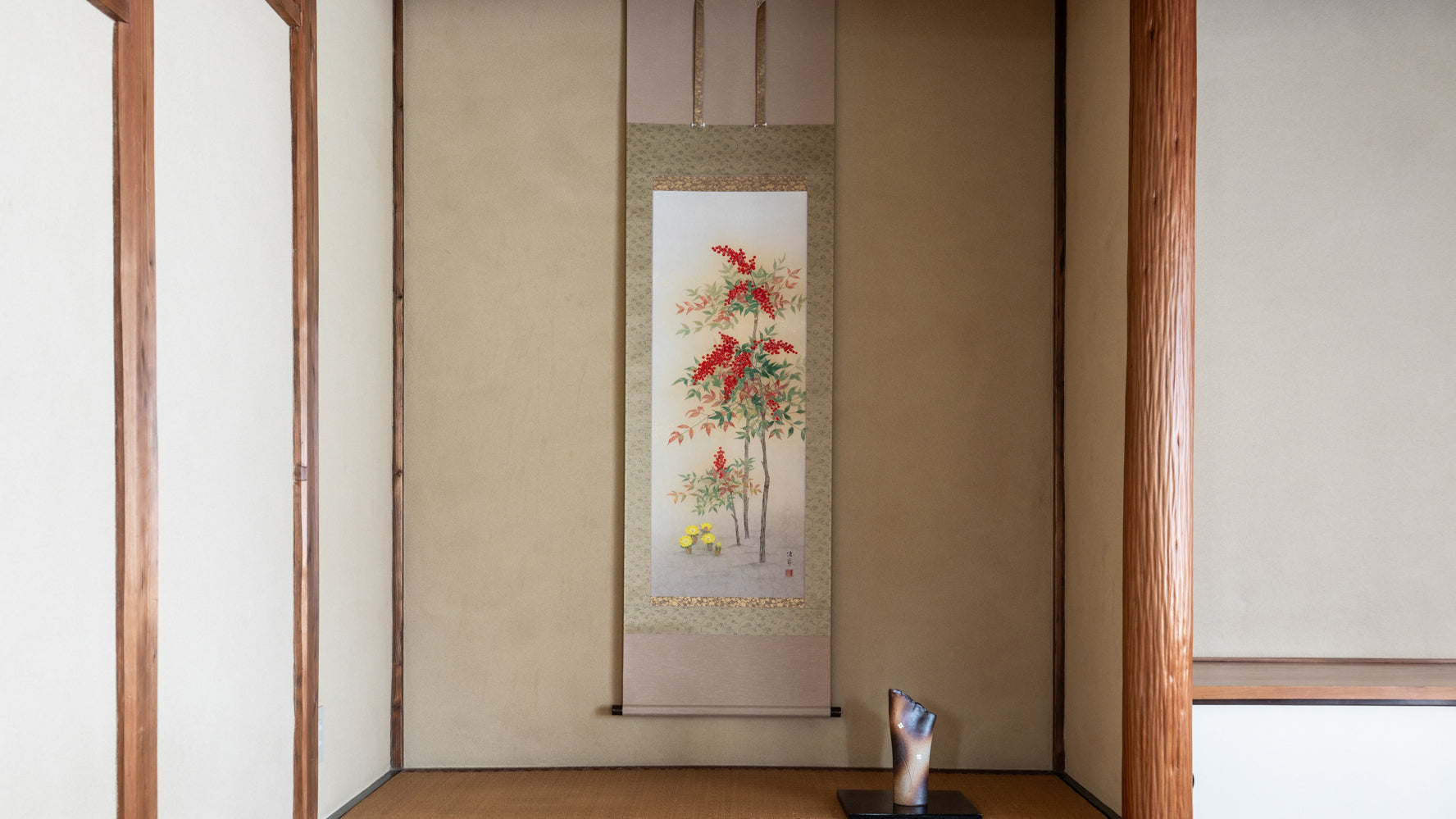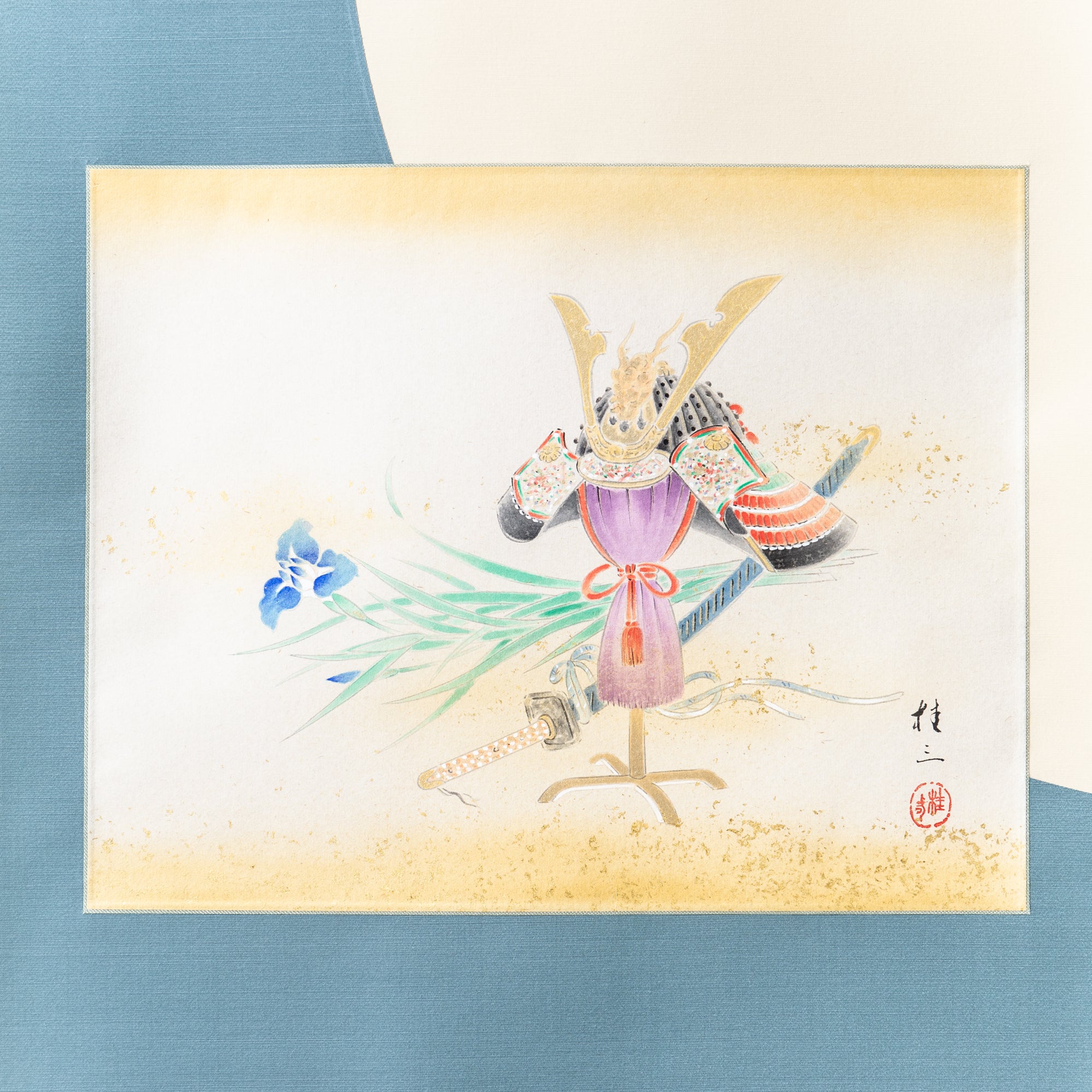
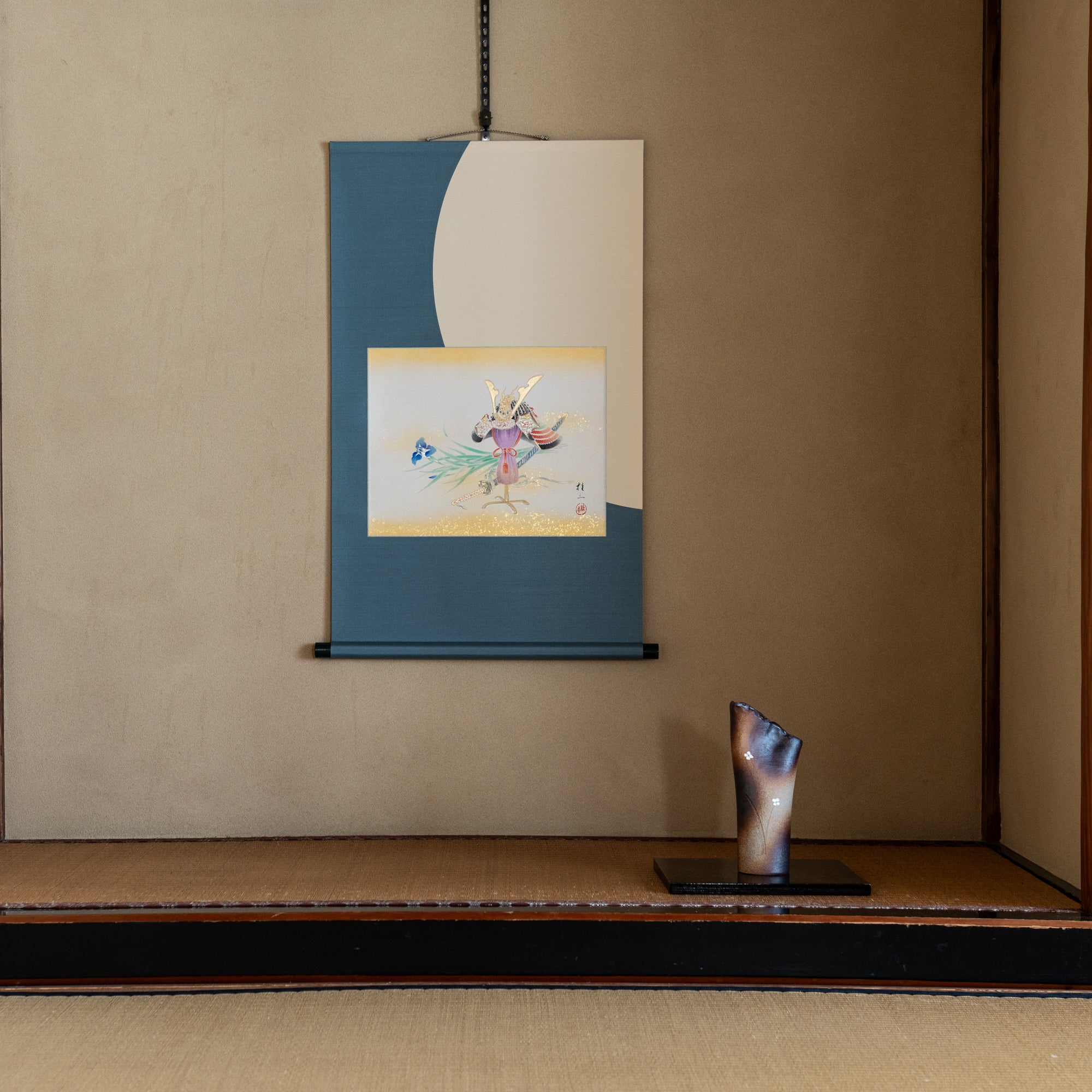
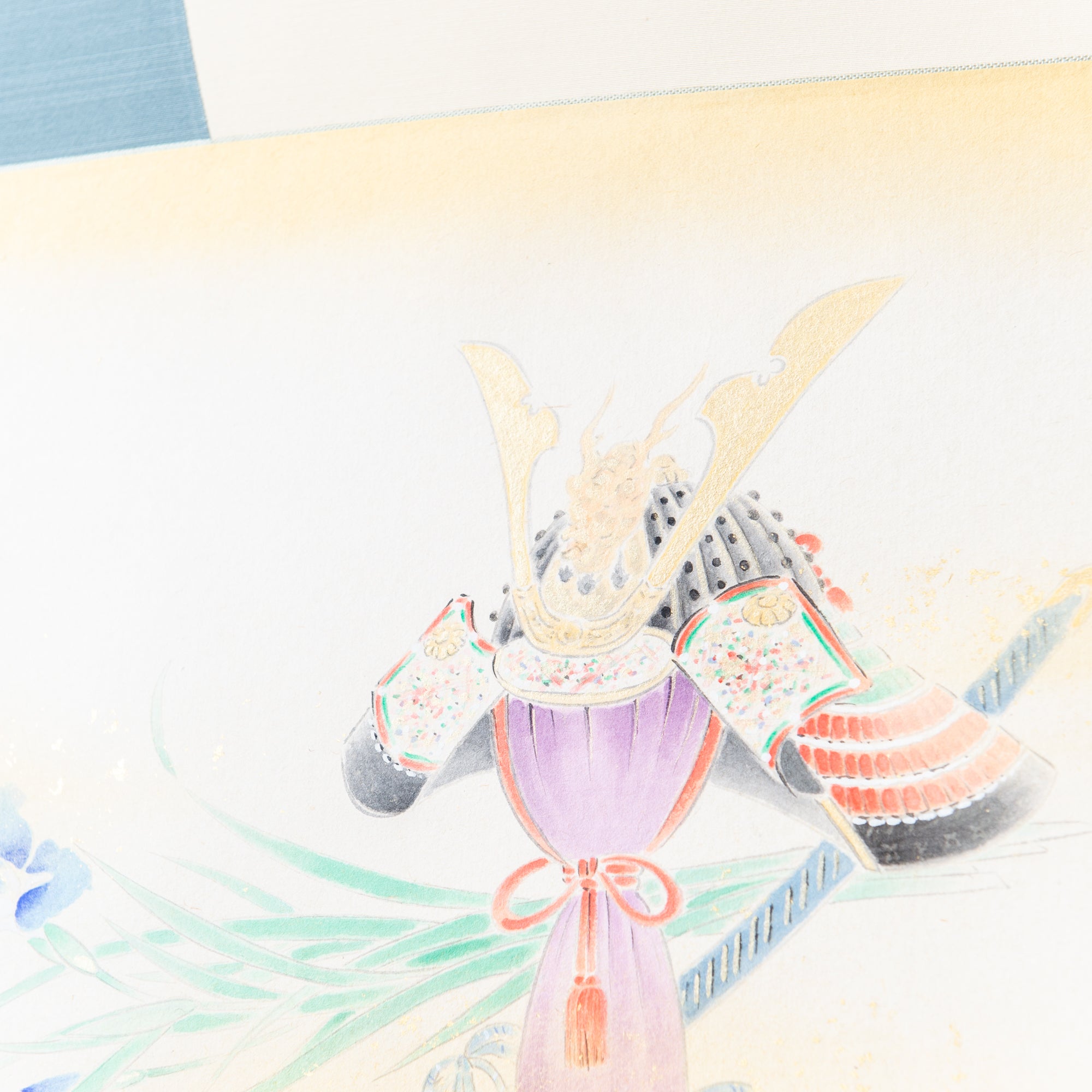
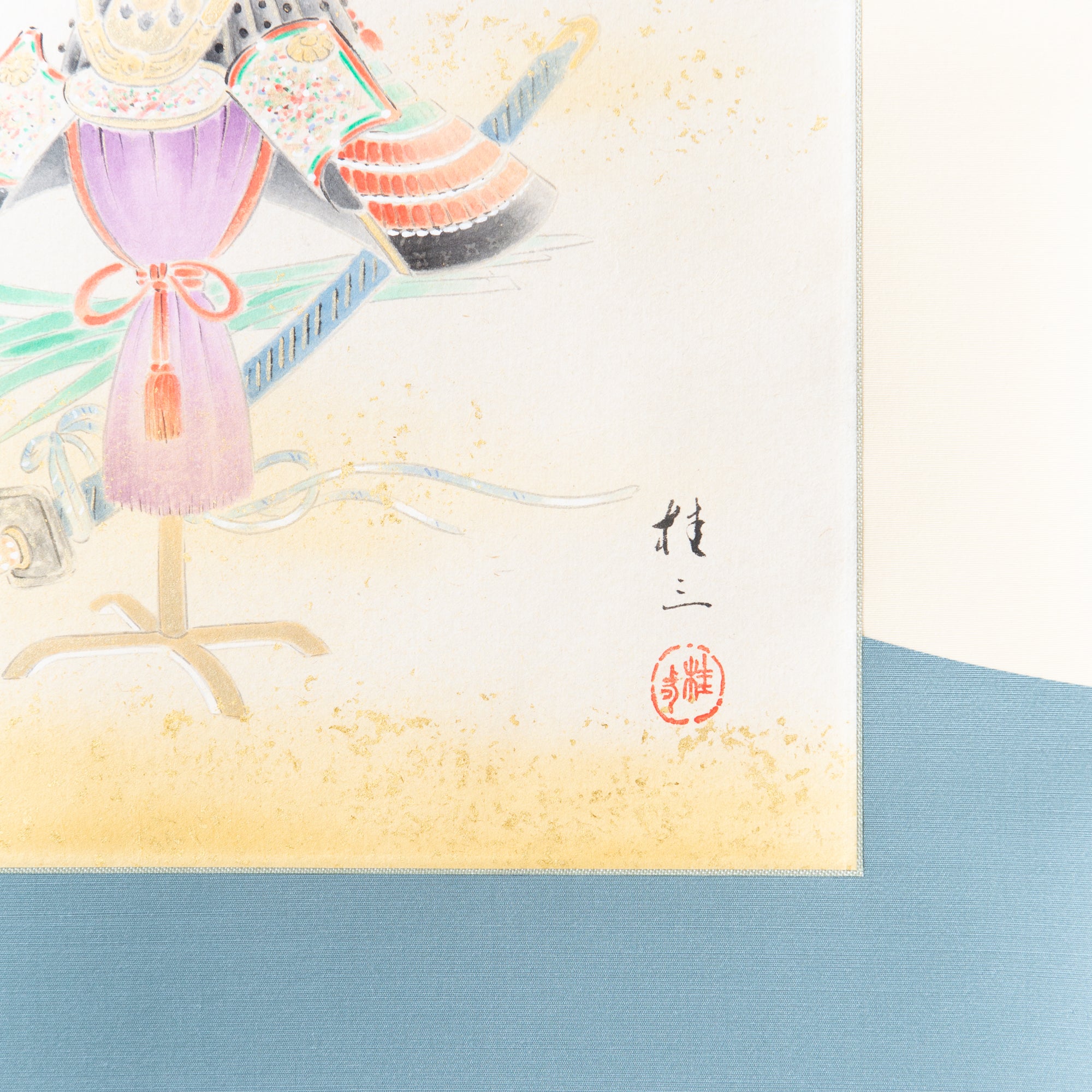
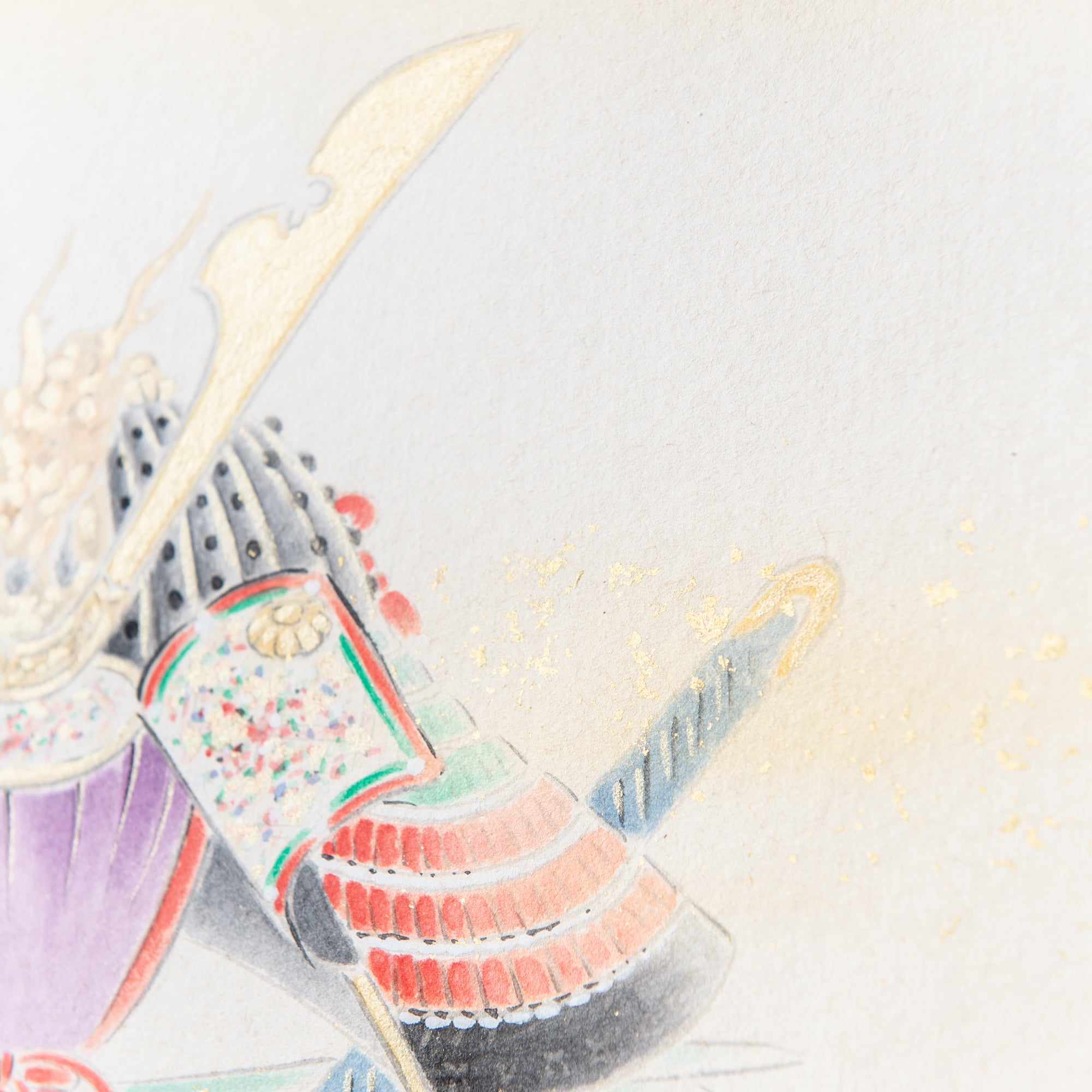
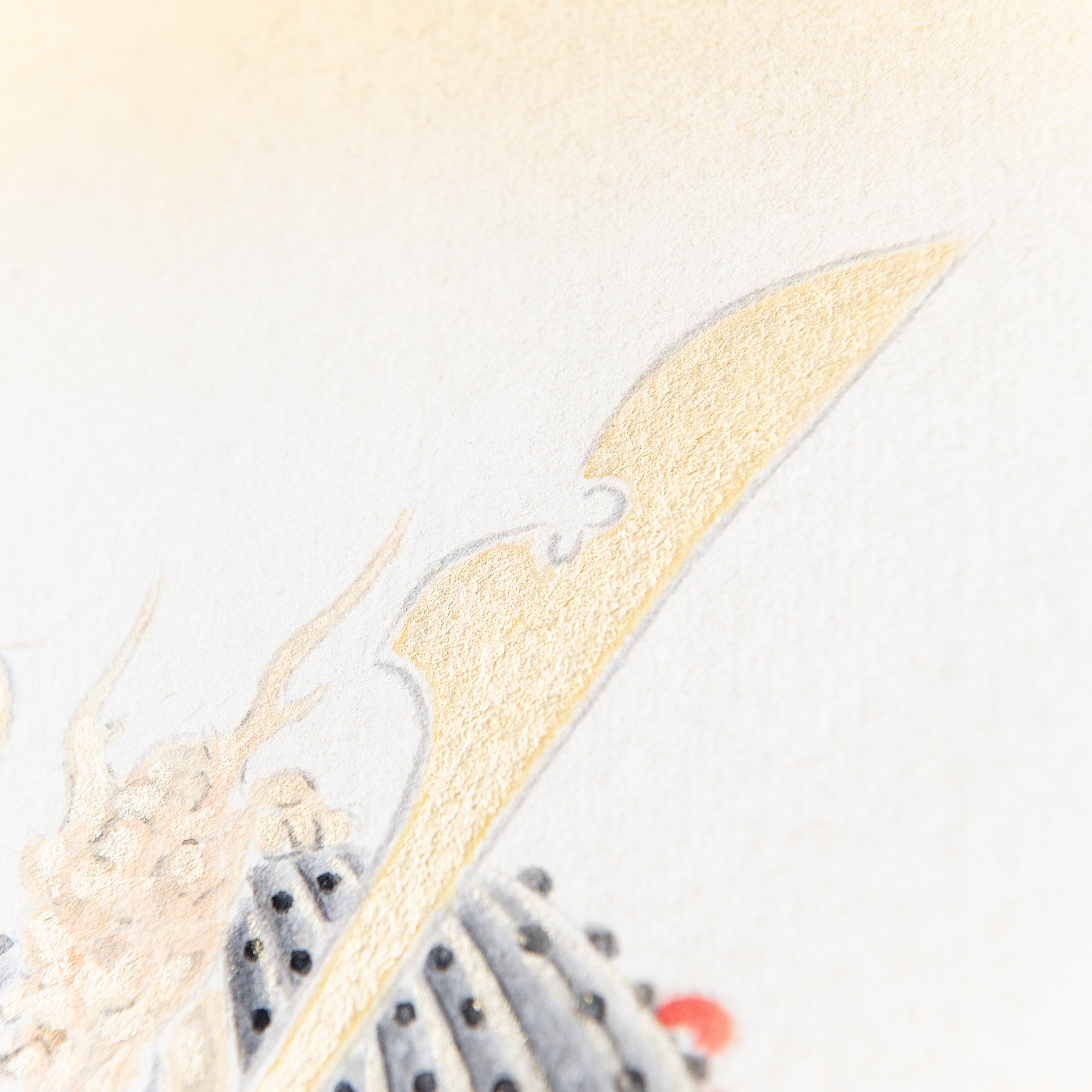
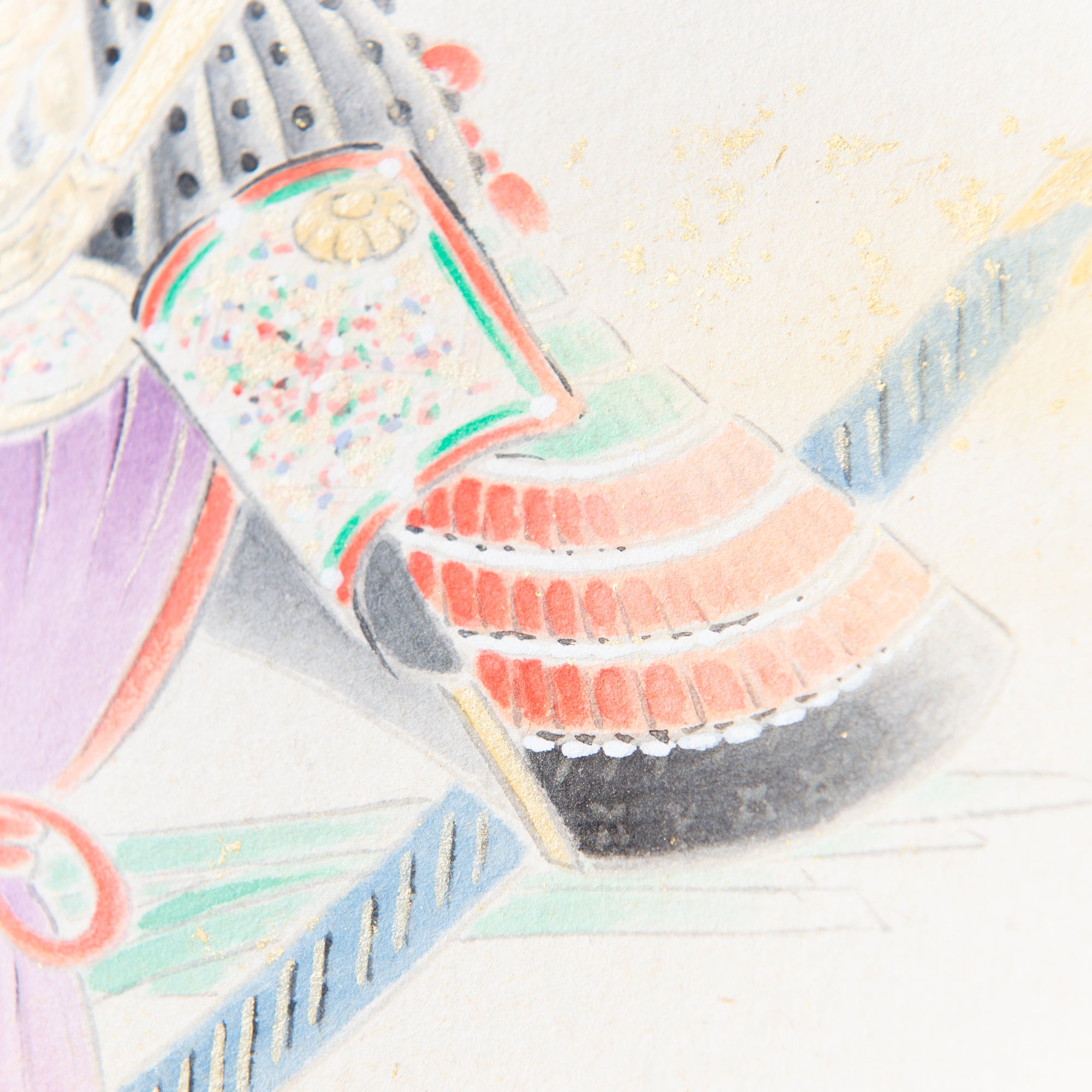
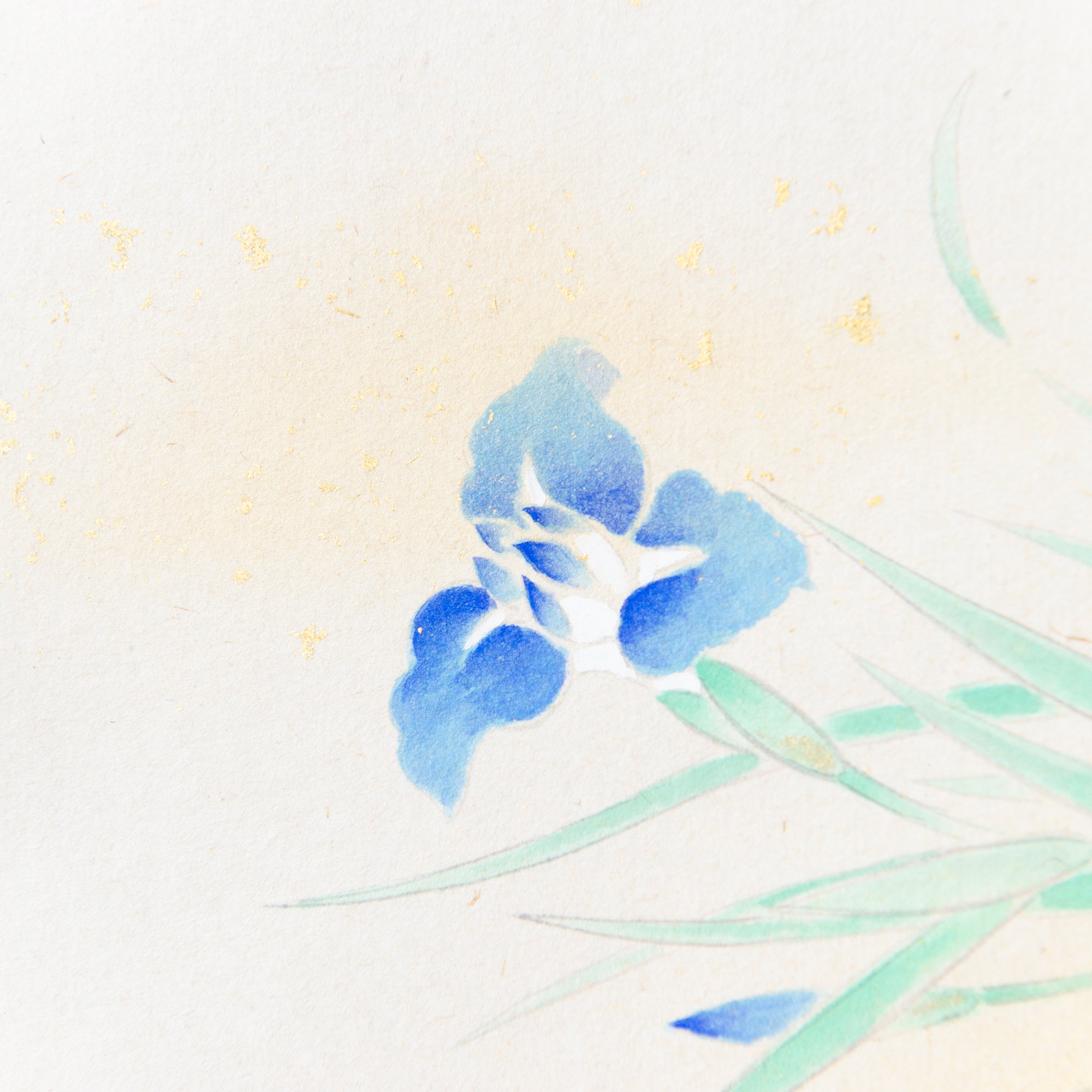
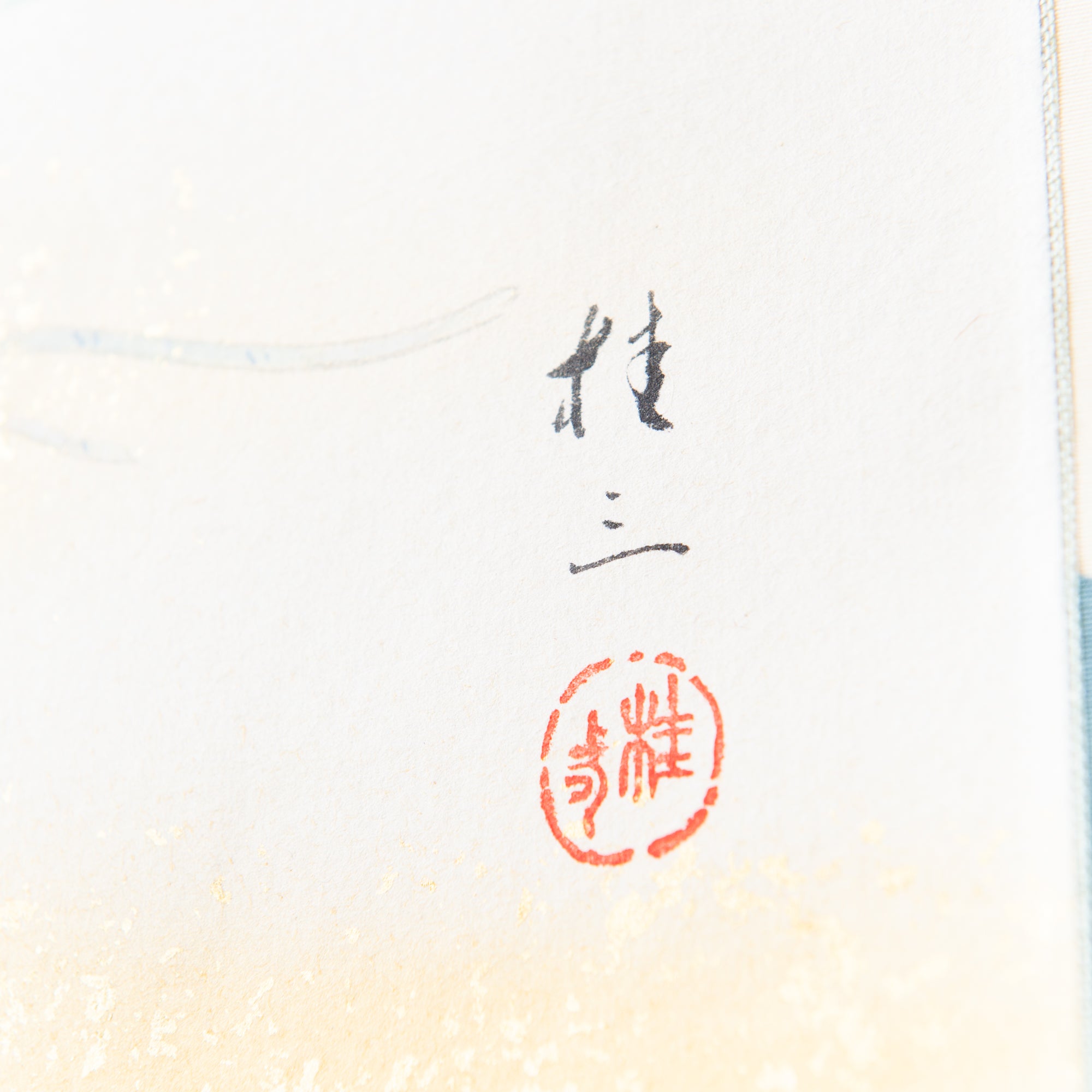
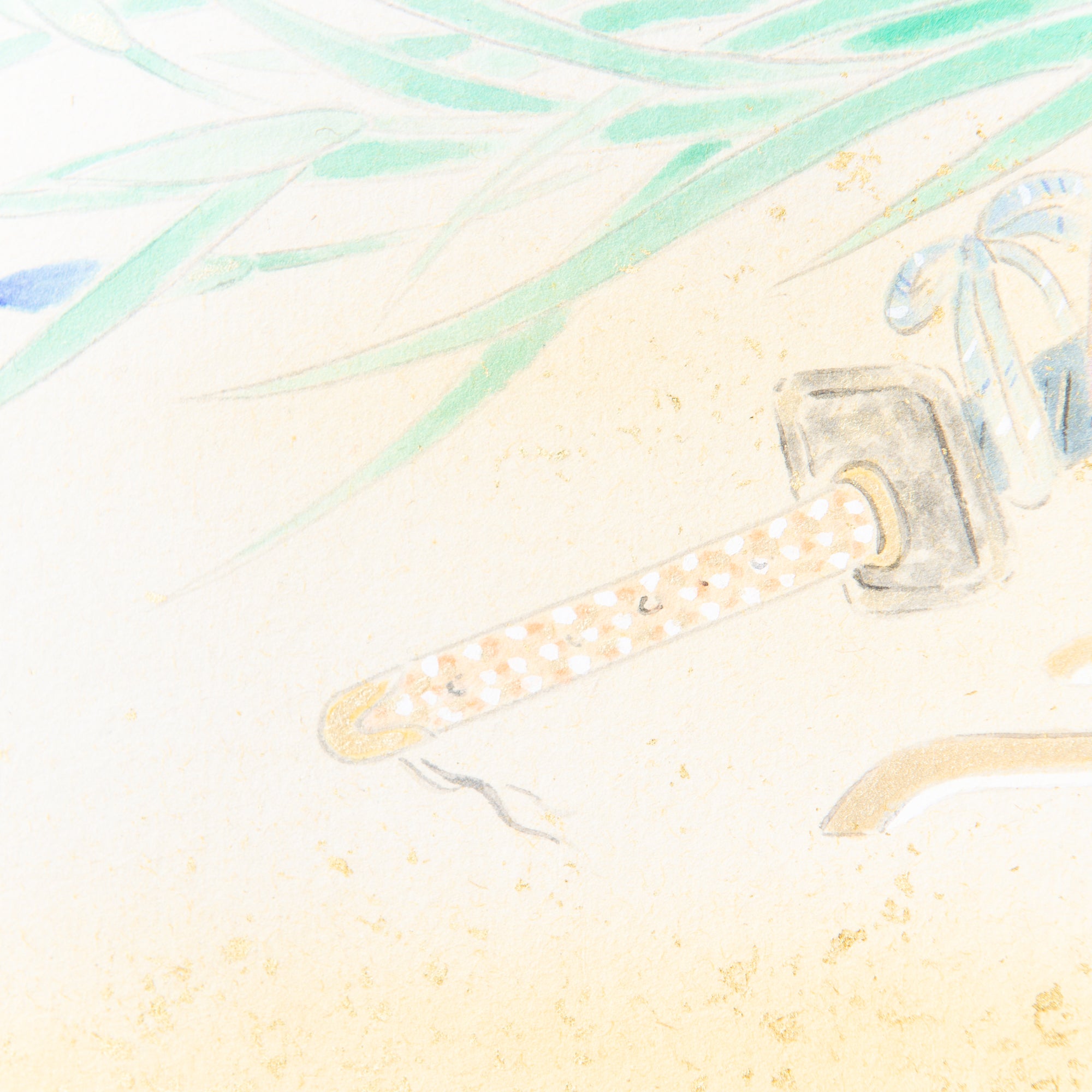
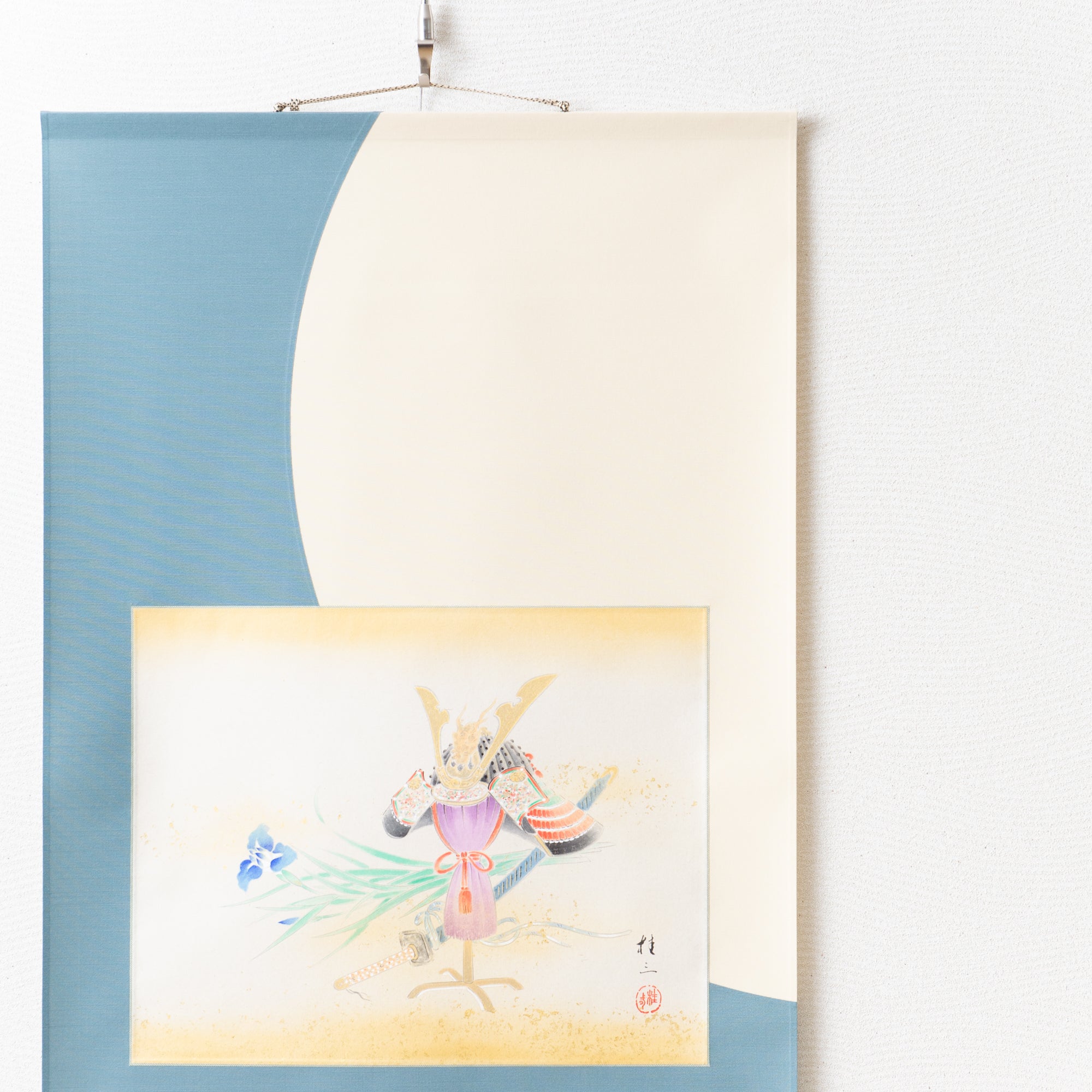
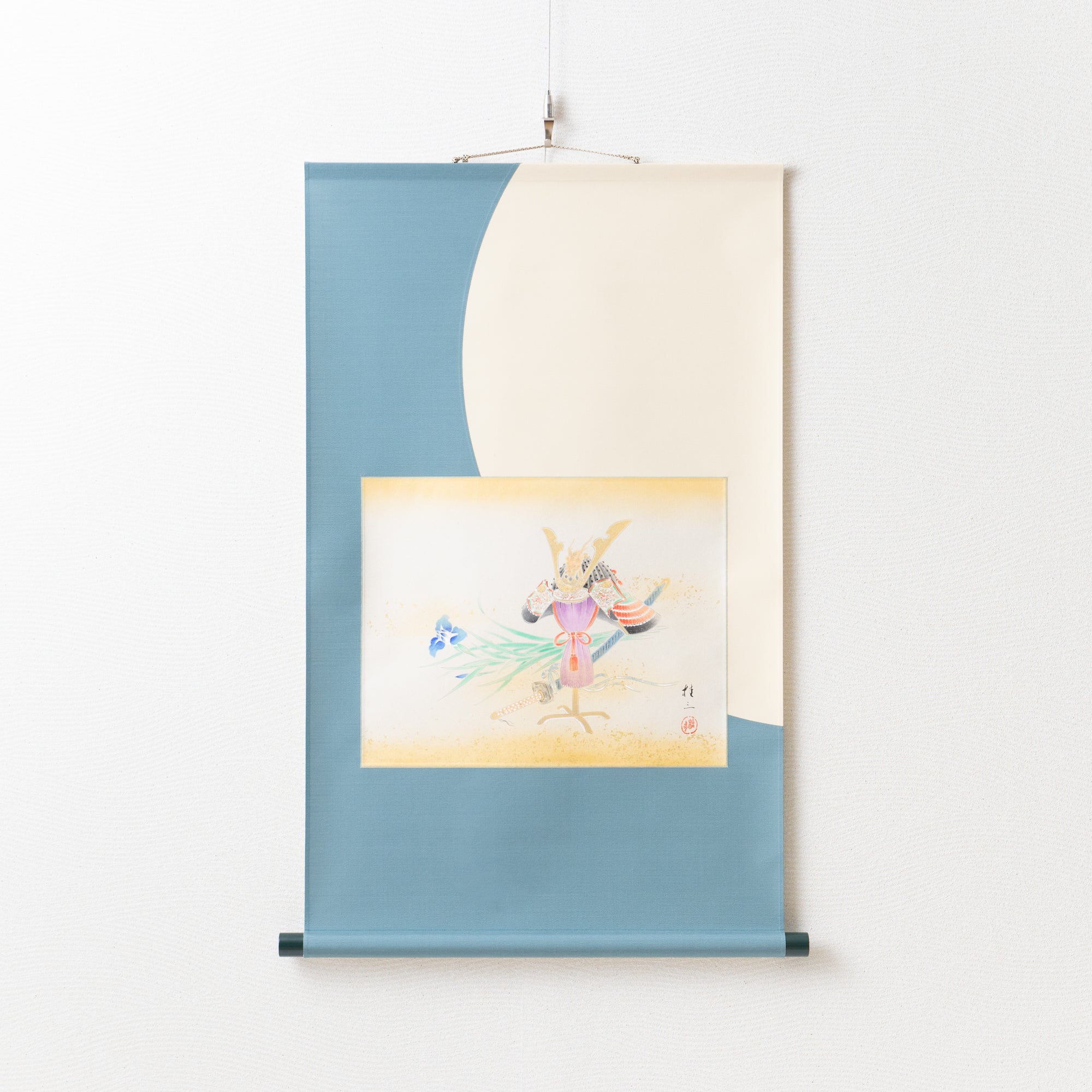
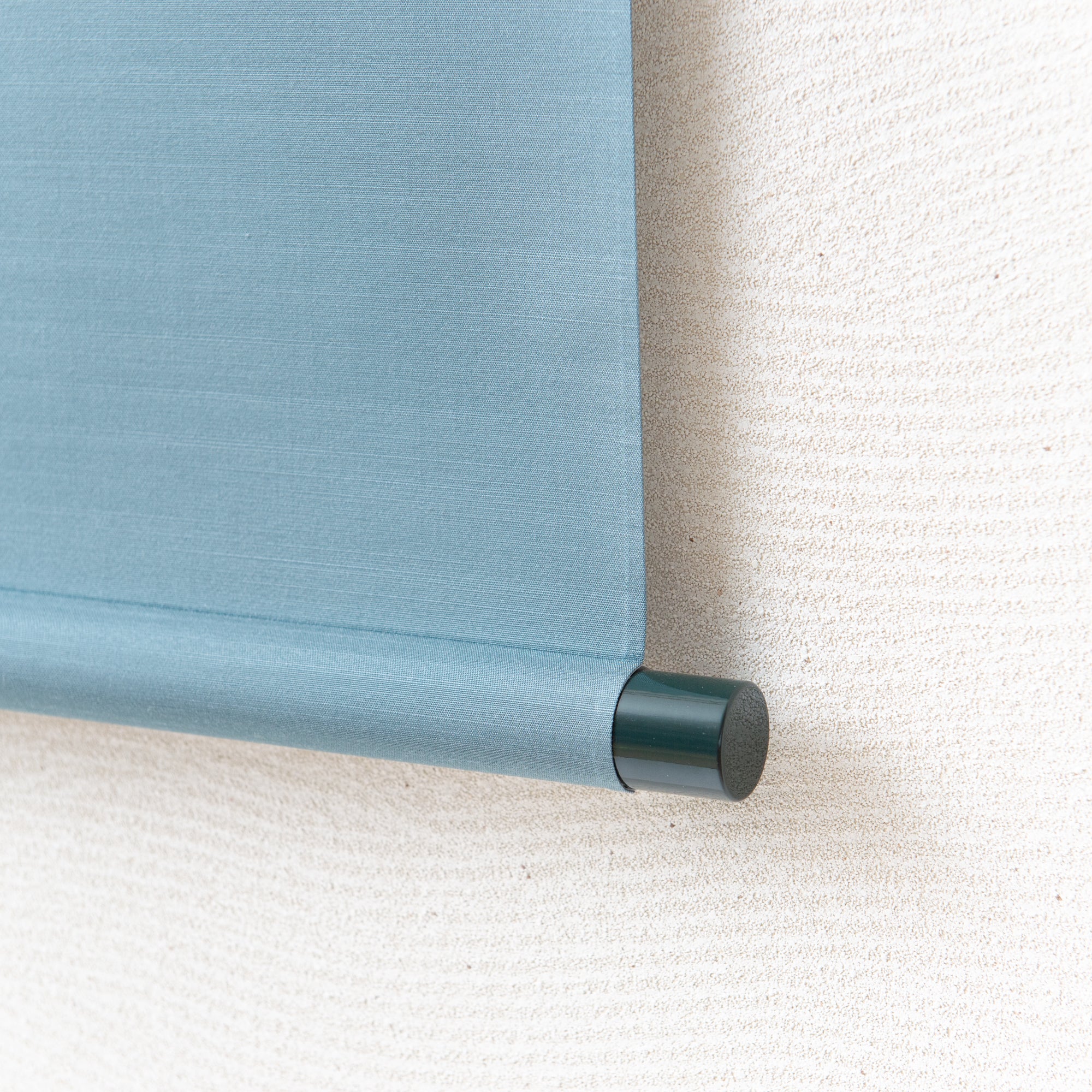
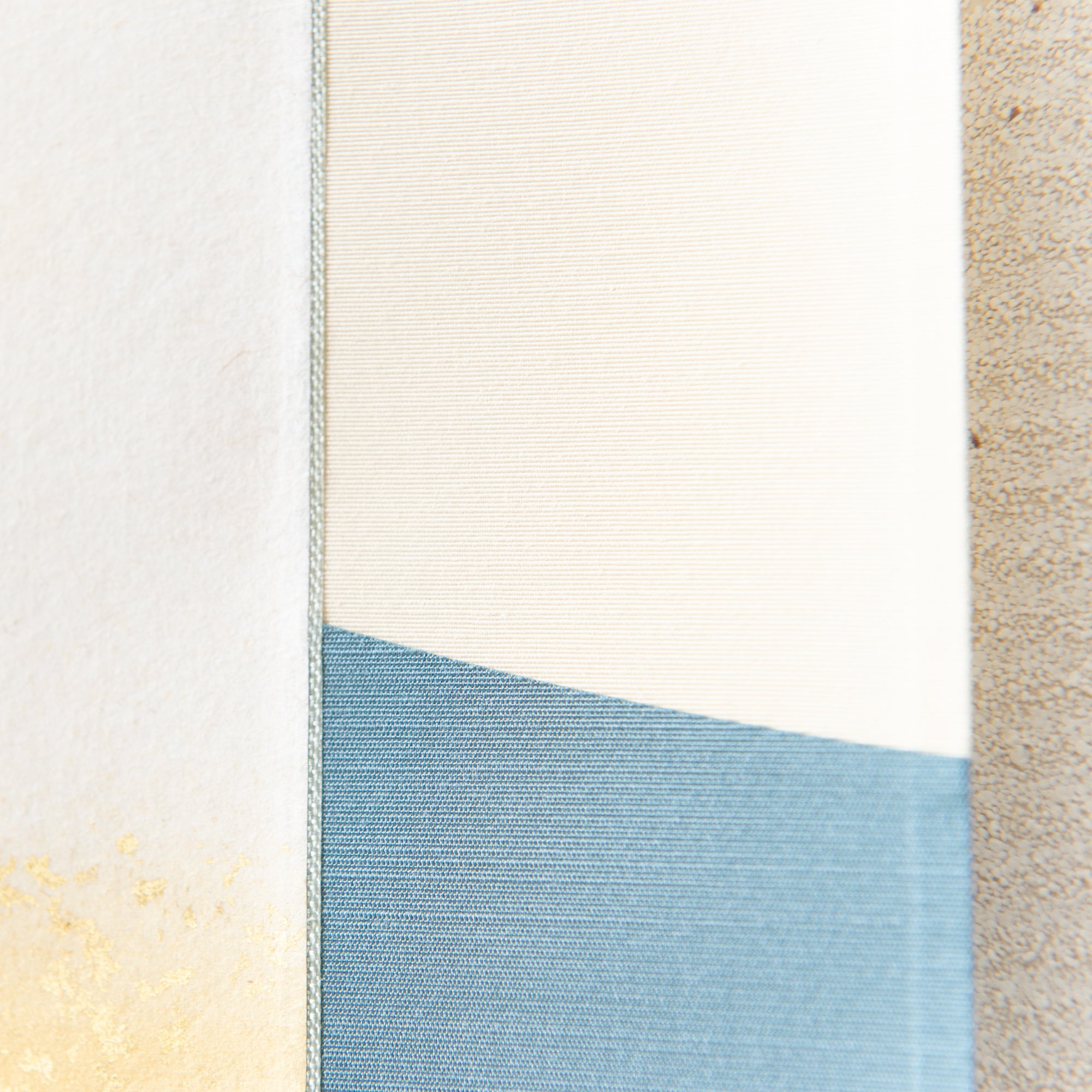
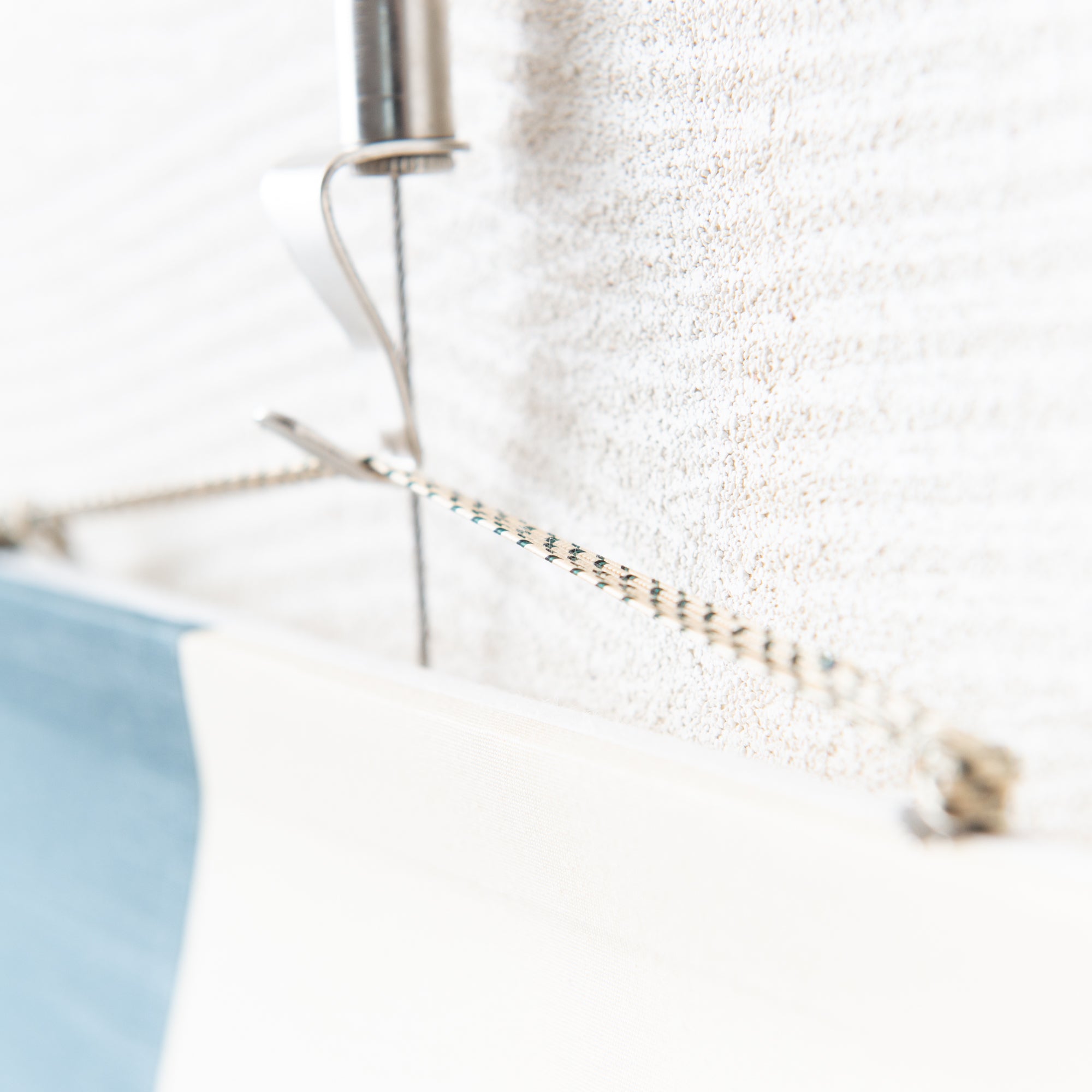
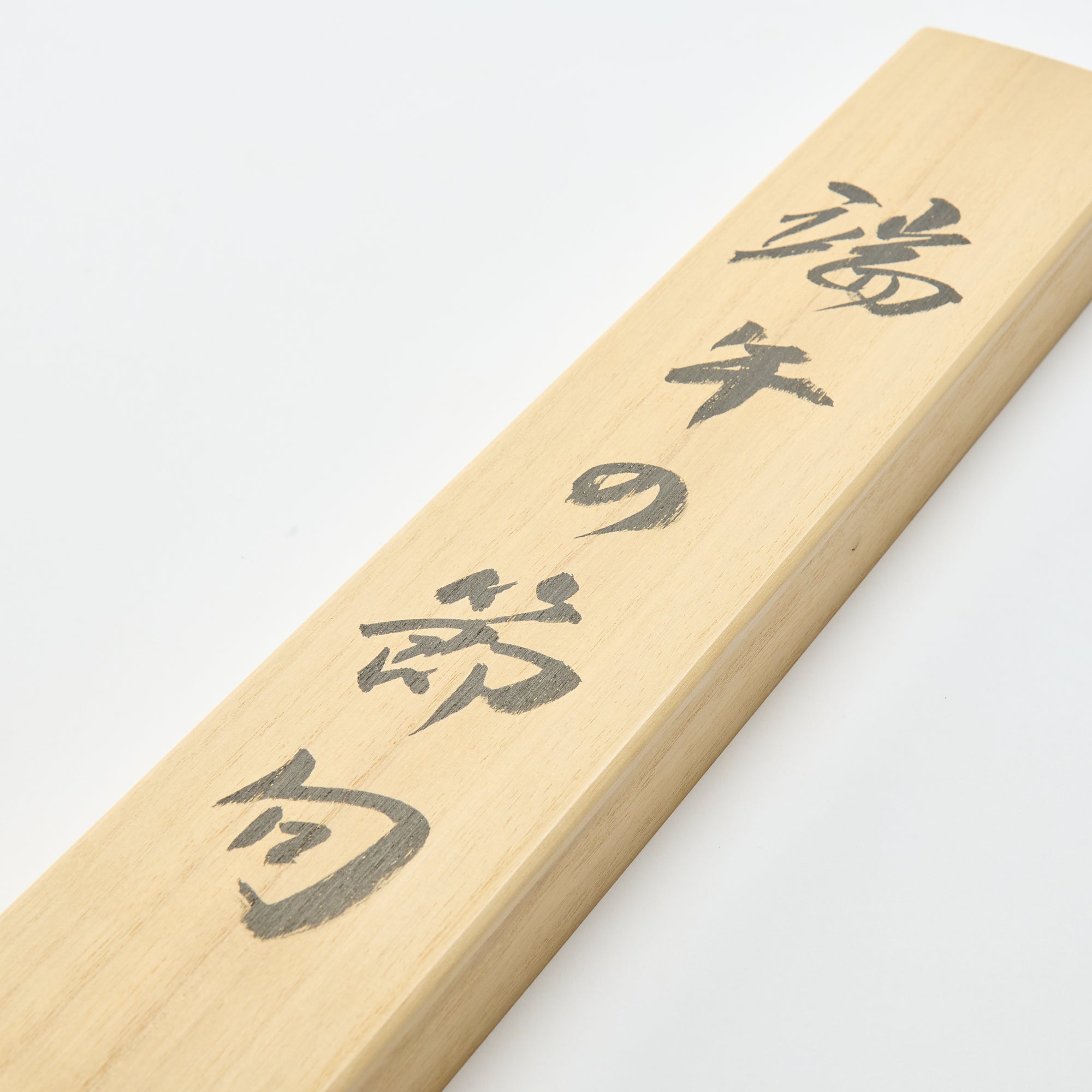
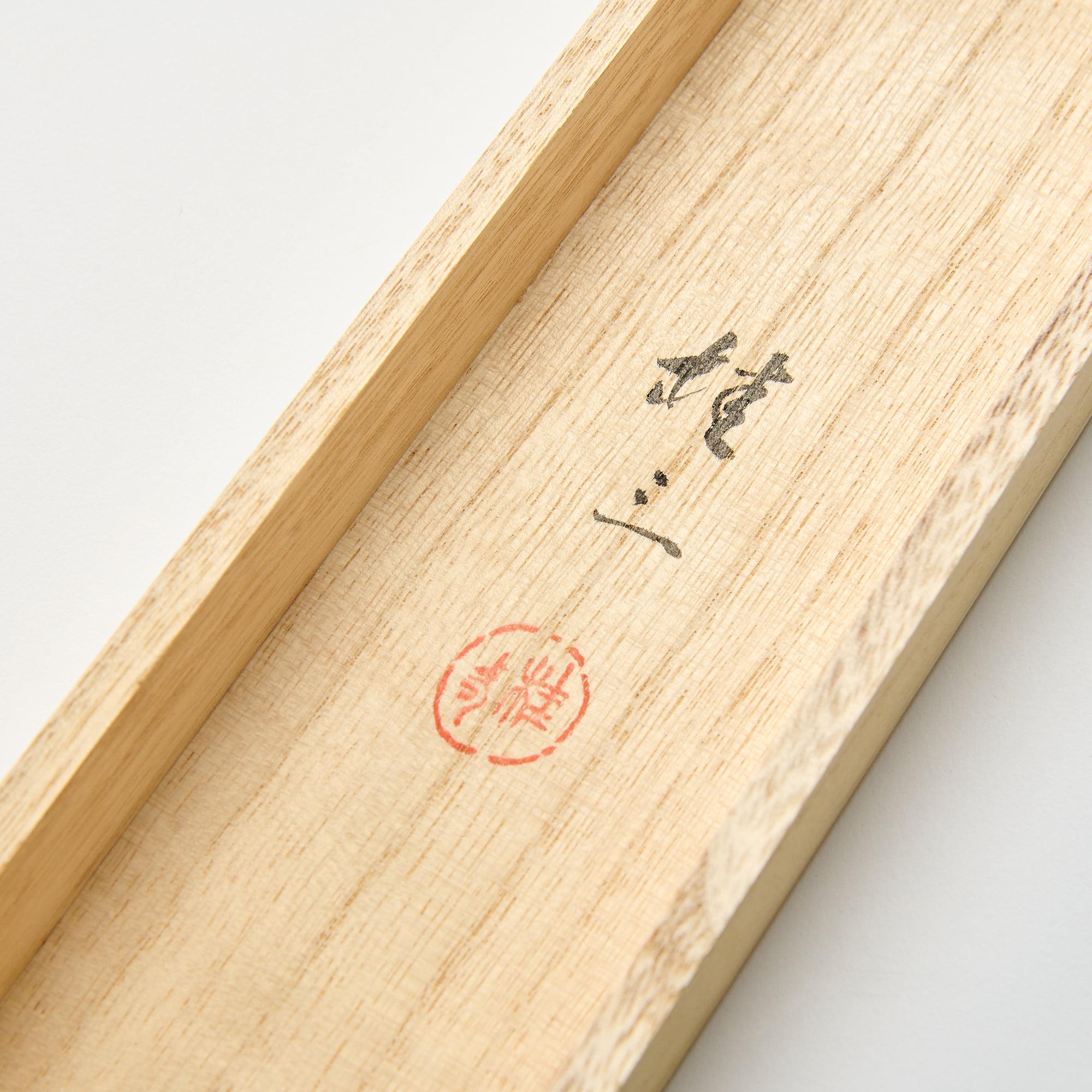
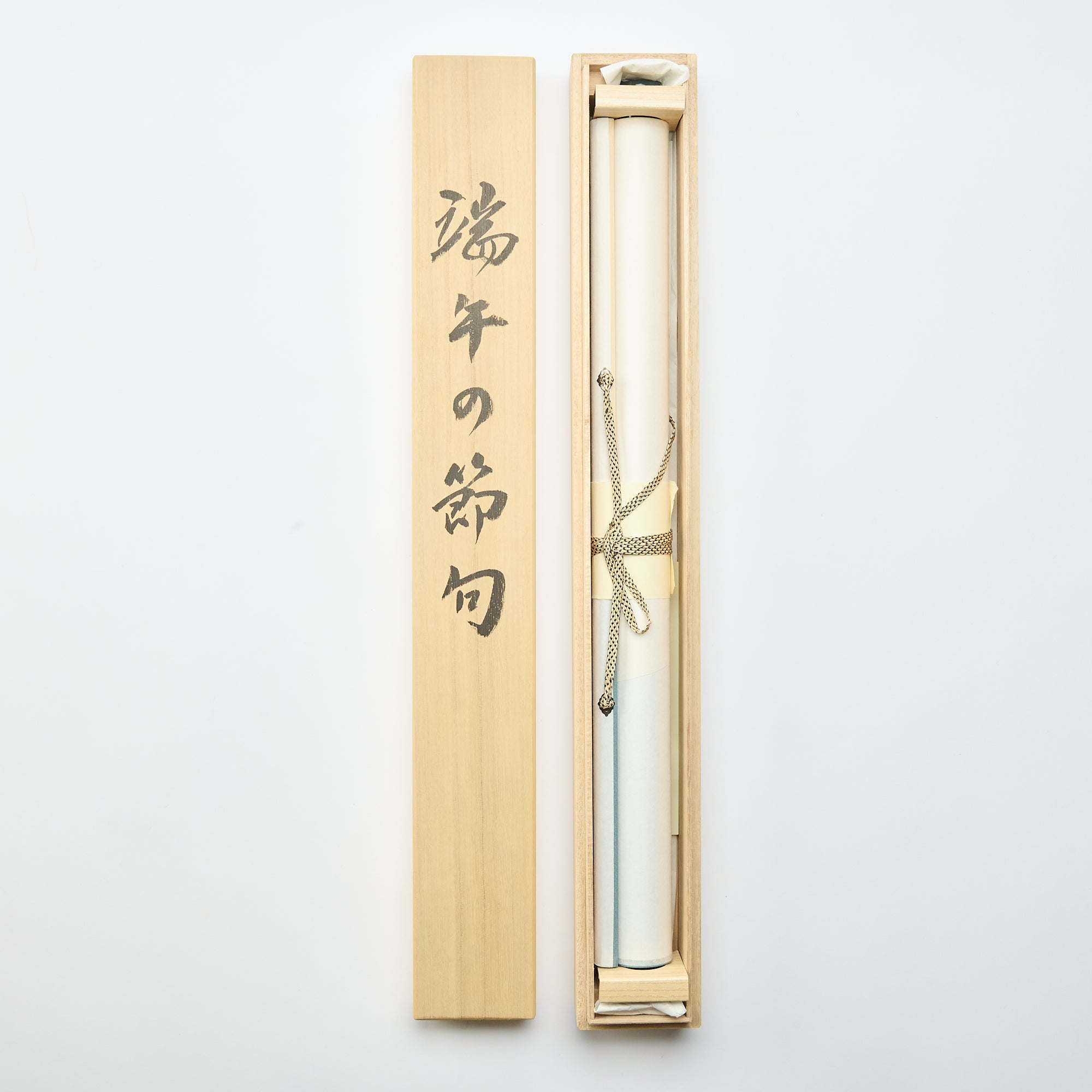
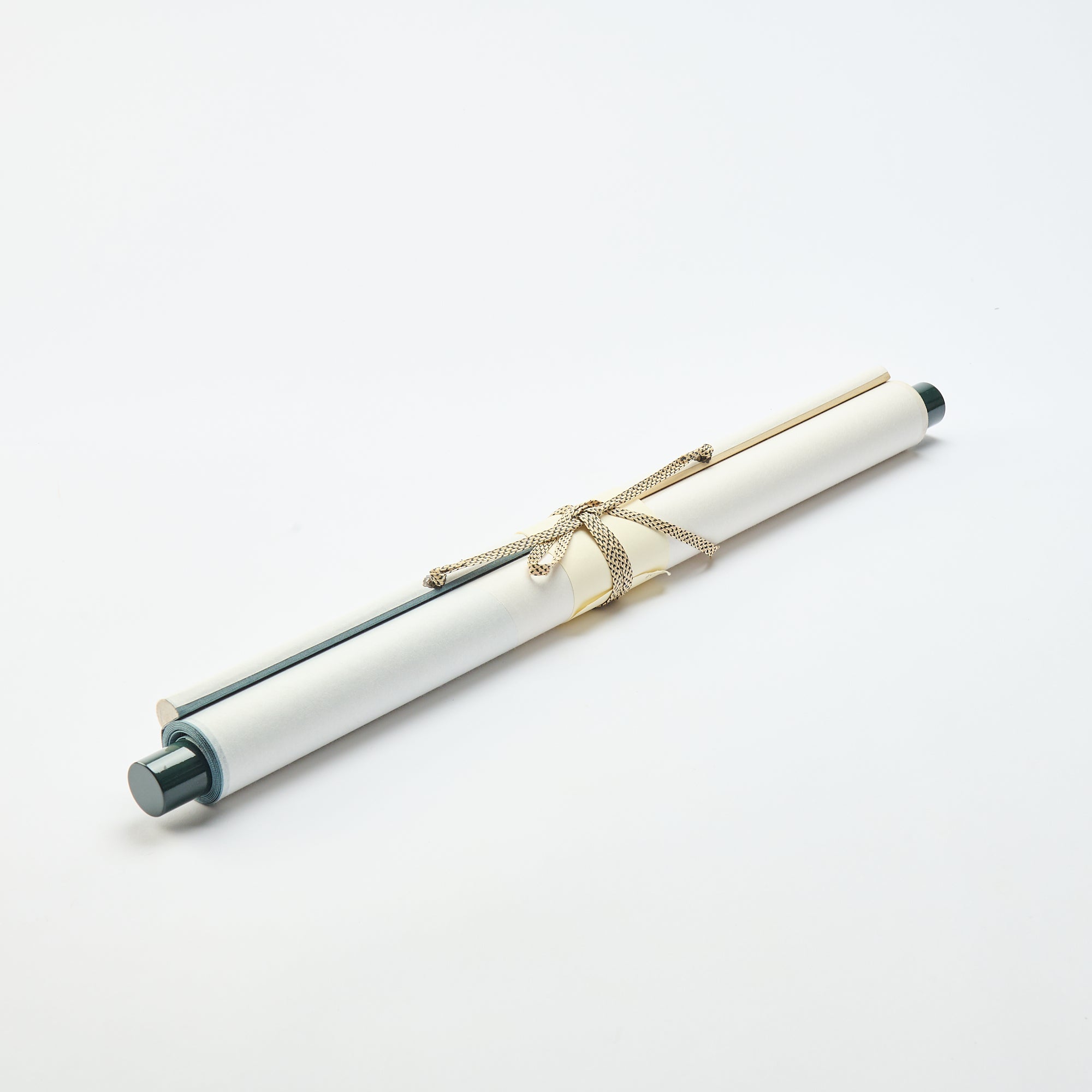
Tango-no-Sekku Kakejiku Hanging Scroll
Estimated Shipping Widget will be displayed here!
This kakejiku hanging scroll by Seto Keizo, depicting a traditional kabuto samurai helmet, is a representative work for celebrating Tango-no-Sekku, also known as Boys' Day or Children's Day. In Japan, families with boys traditionally display May Festival Dolls, kabuto samurai helmets and carp streamers on May 5th to express their hopes for the boys to grow up healthy and become admirable individuals.
Additionally, in the tokonoma "alcove" of the house, hanging scrolls depicting carp climbing up a waterfall or warriors are displayed as a symbol of aspirations for success in life and protection from evil, serving as guardian spirits. This tradition reflects the hope that children will grow up with the strength, dignity, and character of young warriors, excelling in both scholarly and martial pursuits.
This piece is carefully stored, wrapped around a scroll rod inside a beautiful wooden paulownia box.
Sato Keizo, born in 1955 in Tokushima Prefecture, is a skilled ink and color painter and a member of the Bokusai Association. Specializing in flower-and-bird paintings, landscapes, haiga (haiku-themed paintings), and portraits, he brings a refined sensitivity to each of his works.
DES DÉTAILS
| Size |
L 90.0 cm (35.4 in) x W 54.5 cm (21.5 in) [Scroll rod] 60 cm (23.6 in) |
| Weight | 10.9oz, 310g |
| Material |
[Main work] Hand-colored giclée print on washi paper [Scroll rod] Paper [Scroll rod ends] Wood |
| Package Type | Wooden box |
Fabricant / Marque
Fondée à Gifu, une région réputée pour sa richesse Mino washi patrimoine, Kaitakudo Art a créé kakejiku, rouleaux suspendus japonais, depuis plus de cinquante ans. Leur travail est soutenu par des artisans qualifiés, dont des spécialistes certifiés de premier ordre en montage d'art traditionnel, qui respectent des techniques ancestrales. De la planification et du montage à la vente, ils supervisent l'intégralité du processus en interne, garantissant une qualité constante à chaque étape.
Tout en préservant la tradition, ils continuent d'explorer de nouvelles possibilités pour le kakejiku, en développant des styles adaptés aux intérieurs modernes et en partageant la beauté de l'art japonais avec le monde.
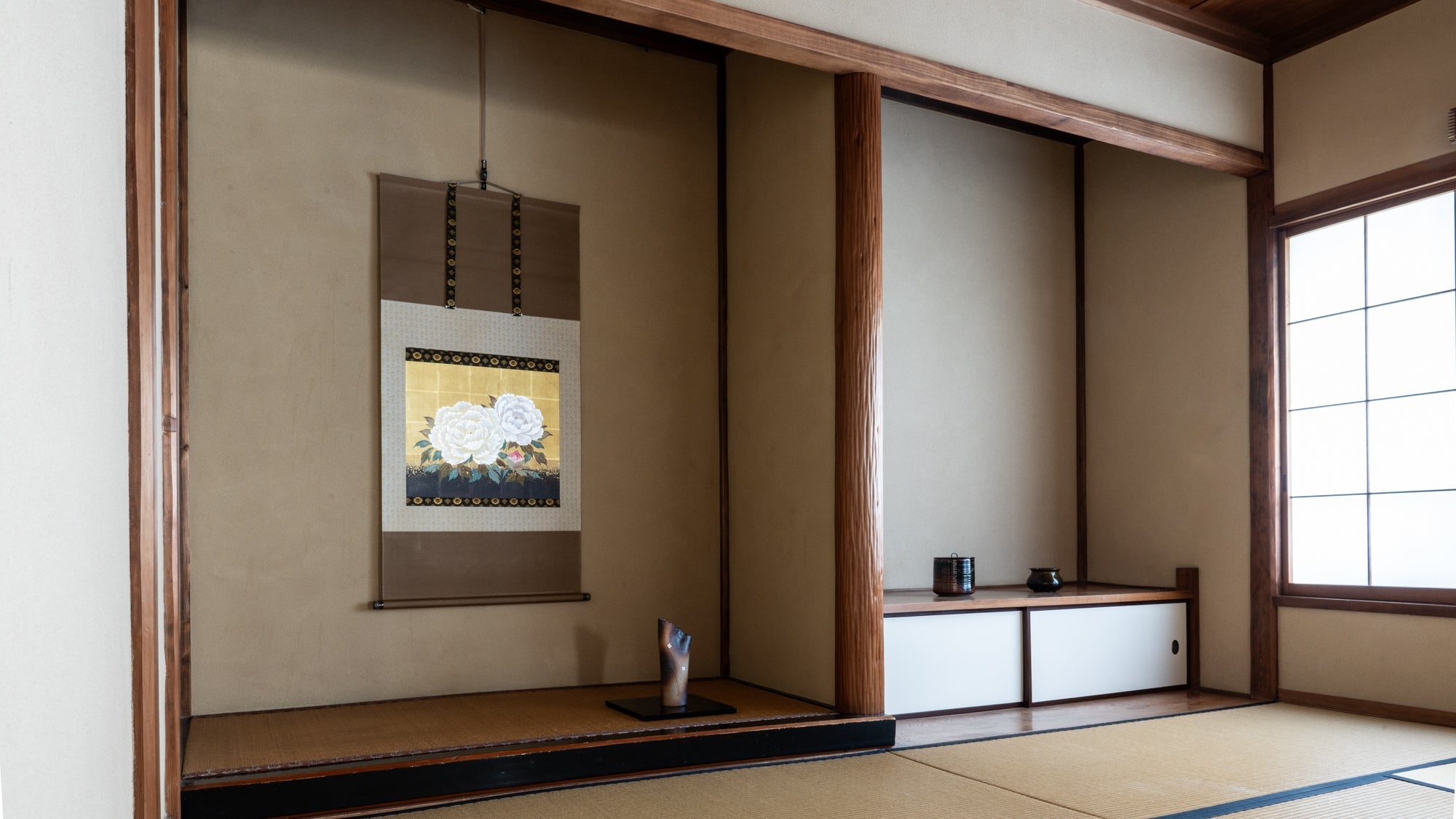
Artisanat
Rouleaux suspendus japonais, connus sous le nom de kakejiku ou kakémonoLes rouleaux suspendus sont une forme traditionnelle d'art mural japonais, appréciée depuis plus de mille ans. Ils présentent des calligraphies japonaises, des motifs saisonniers ou des peintures japonaises, créés avec des techniques raffinées qui mettent en valeur la beauté de la nature et de la culture.
Polyvalents et intemporels, les rouleaux japonais suspendus peuvent être exposés dans les maisons ou les salons de thé. On les appelle souvent rouleaux d'images ou rouleaux japonais. Leur légèreté permet de les enrouler et de les ranger facilement, ce qui permet de les changer facilement selon la saison ou l'occasion.
Les rouleaux suspendus japonais restent une expression de l'art mural japonais et une façon judicieuse d'apporter de l'harmonie à n'importe quel espace. Trouvez votre pièce préférée.
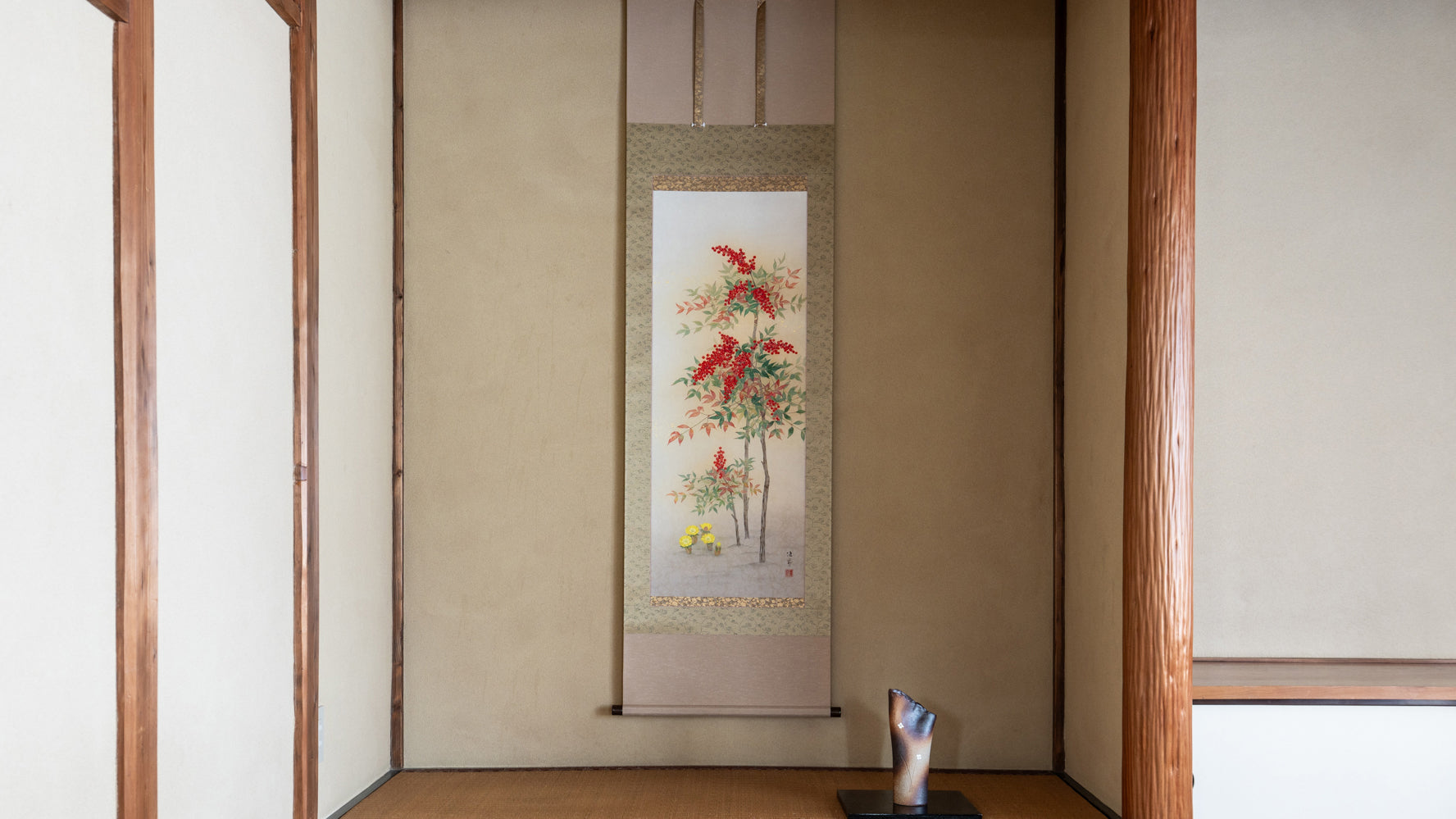
Comment prendre soin
Choisir les options



















Estimated Shipping Widget will be displayed here!
Rouleaux suspendus Kakejiku
Rouleaux suspendus japonais, connus sous le nom de kakejiku ou kakémonoLes rouleaux suspendus sont une forme traditionnelle d'art mural japonais, appréciée depuis plus de mille ans. Ils présentent des calligraphies japonaises, des motifs saisonniers ou des peintures japonaises, créés avec des techniques raffinées qui mettent en valeur la beauté de la nature et de la culture.
Polyvalents et intemporels, les rouleaux japonais suspendus peuvent être exposés dans les maisons ou les salons de thé. On les appelle souvent rouleaux d'images ou rouleaux japonais. Leur légèreté permet de les enrouler et de les ranger facilement, ce qui permet de les changer facilement selon la saison ou l'occasion.
Les rouleaux suspendus japonais restent une expression de l'art mural japonais et une façon judicieuse d'apporter de l'harmonie à n'importe quel espace. Trouvez votre pièce préférée.
